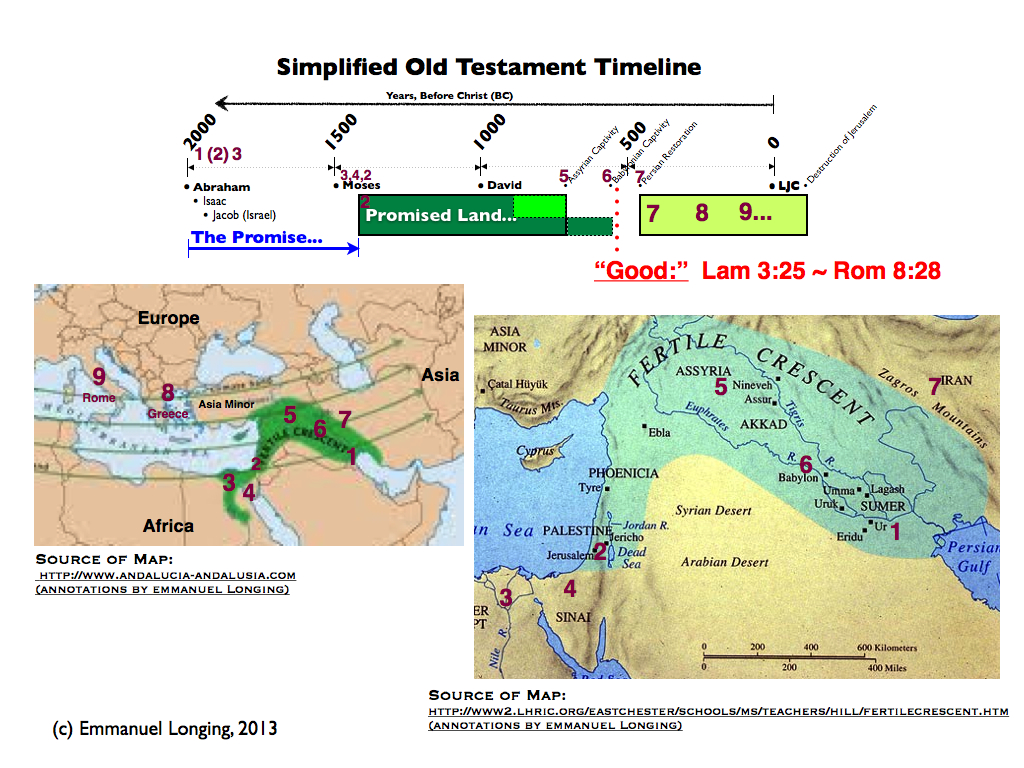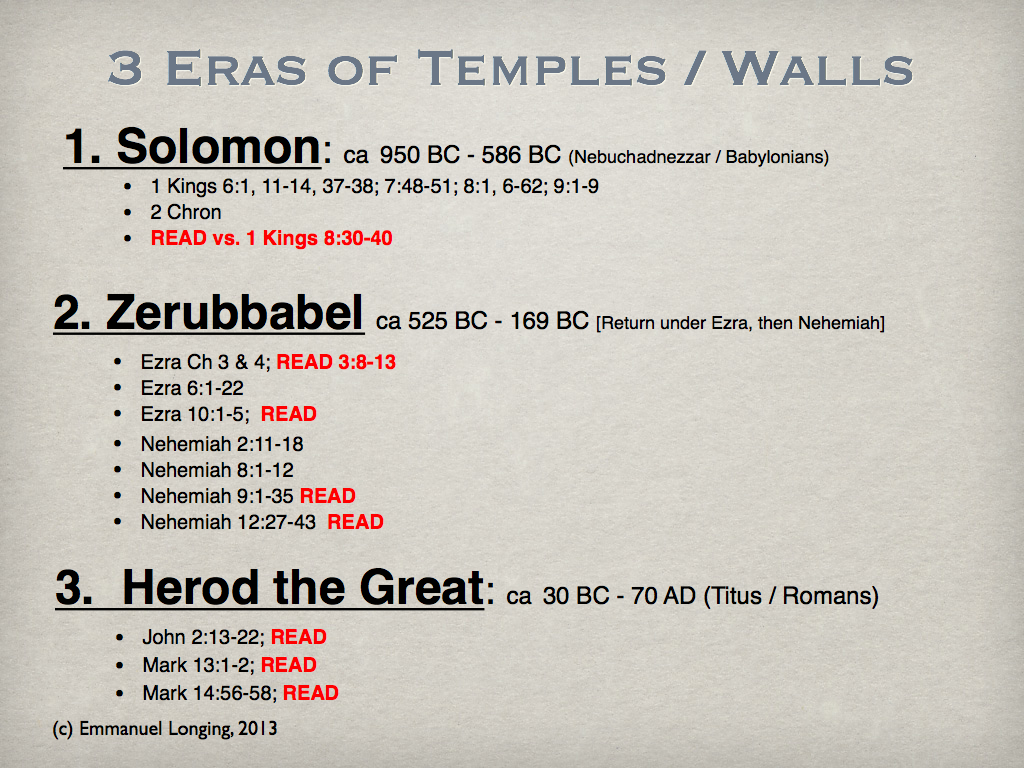The 1st Temple, that build by King Solomon, lasted from the time of Solomon (ca. 950 B.C.) to an exact date known in history when Jerusalem was finally and utterly sacked by the Babylonian nation (586 B.C), a period of about 400 years. The conquering Babylonians burned and looted the city of Jerusalem, knocked down the walls of the city, destroyed the Temple itself, and took its treasures and sacred objects back to Babylon along with most of the Jewish people, many of whom were killed, and others who became slaves. The poorest of the poor were left in the Promised Land to work it under primitive, desperate conditions also as slaves to the Babylonians.
Not long after these events, Babylon was itself conquered by its rival neighbor, the Medes joined with the Persians, who in turn were dominated by the Persians (who, incidentally, occupied the same territory as modern day Iran, also known as Persia). Under the conquering Persian king, Cyrus, the Jewish people were allowed to return to their Promised Land, and rebuild both the Temple and the city of Jerusalem itself. This all took place after an exile period of 70 years, which God characterized as a sabbath for the Land itself after the corruption which had taken place of the 500-some years prior.
This rebuilding occurred under three names: Zerubbabel, Ezra, and Nehemiah. Zerubabbel was chosen by the Persian King to be the first governor of the restored Land. However from that time, ca. 500 B.C., until 1948, the Jewish people who lived in the Land were under the dominion of a foreign, Gentile national authority. Ezra was a priest who returned to Jerusalem with a meager remnant of Levites and people from the priestly line of Aaron to rebuild the Temple, and re-instate the Temple sacrifices and festal calendar. Later Nehemiah took leave from his senior position in the Persian government, as a Jew, to go to Jerusalem and rebuild its fallen walls and burned gates. These historical events are recorded in the Old Testament books in the name of Ezra and Nehemiah; the Book of Esther is also written during that period showing God’s sovereignty over Persia even during the exile period.
Shown below is our previously referenced timeline showing the return to the Land in the light green box headed by the number “7” designating “Persia” (Iran) as shown in the accompanying maps. After a period of Persian rule, Persia itself was conquered by the Greek nation led by the famous general and ruler Alexander. Upon such event, the Land and the Jewish people were under the dominion of the Greeks. However, shortly thereafter Alexander dies. Upon his death, his empire is divided amongst his four leading Generals. Ptolemy became the ruler of the nation of Egypt; the name Ptolemy then became sometime like a succeeding title to his successors who ruled Egypt under being conquered finally by the Romans. The two other generals under Alexander who took over as rulers near the Land was Seleucus and Antigonus. As things always seem to occur these three generals, and their successors ruling their respective national territories warred with each other from time to time. Such conflicts often involved the Land as it was in the general area bounded at various times by all of these Alexandrian successor rulers. During the approximate 400 year period between the close of the Old Testament Biblical text (Malachi) and the onset of the history recorded in the Gospel records of the New Testament (at the birth of Christ), there was yet more destruction of even the Second Temple. In the extra-Biblical record, during the period ca. 165 B.C., there was the revolt of the Jewish people under the family named Maccabees, in response to particular religious atrocities by the ruler Antiochus Epiphanes IV, a king in the Seleucid kingdom. For a time, the Jewish people achieved a limited sovereignty over Jerusalem and surrounding territory. This ended about 100 years later when the Romans conquered the Land and indeed the entire Mediterranean basin and territories beyond. That rule lead to Herod the Great being the Roman ruler of the Land at the time of the birth of Christ. Herod in an apparent effort to placate the Jewish leaders and in particular the traditionalists who held to the Covenant relationship with YWYH (Lord) restored, rebuilt, and greatly expanded the Temple Mount and the Temple itself.
During the approximate 400 year period between the close of the Old Testament Biblical text (Malachi) and the onset of the history recorded in the Gospel records of the New Testament (at the birth of Christ), there was yet more destruction of even the Second Temple. In the extra-Biblical record, during the period ca. 165 B.C., there was the revolt of the Jewish people under the family named Maccabees, in response to particular religious atrocities by the ruler Antiochus Epiphanes IV, a king in the Seleucid kingdom. For a time, the Jewish people achieved a limited sovereignty over Jerusalem and surrounding territory. This ended about 100 years later when the Romans conquered the Land and indeed the entire Mediterranean basin and territories beyond. That rule lead to Herod the Great being the Roman ruler of the Land at the time of the birth of Christ. Herod in an apparent effort to placate the Jewish leaders and in particular the traditionalists who held to the Covenant relationship with YWYH (Lord) restored, rebuilt, and greatly expanded the Temple Mount and the Temple itself.
The chart below cites key Bible passages on the Old Testament on the First Tabernacle, the Second Tabernacle under Zerubbabel, and the expanded Second Tabernacle under Herod the Great. Let us now turn to the New Testament period and the Person and Work of the Lord Jesus Christ.
Let us now turn to the New Testament period and the Person and Work of the Lord Jesus Christ.